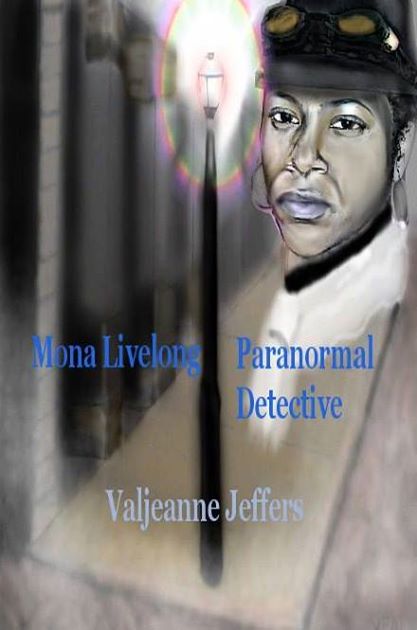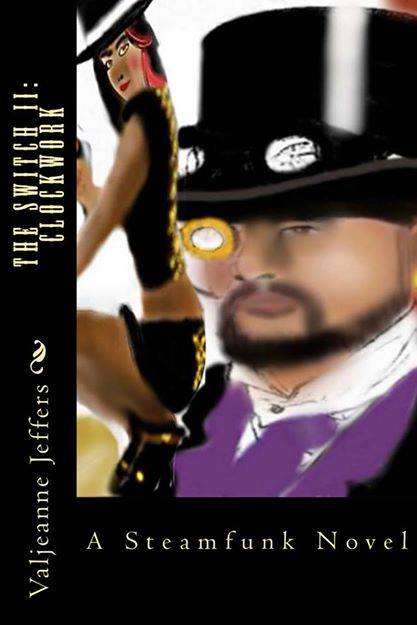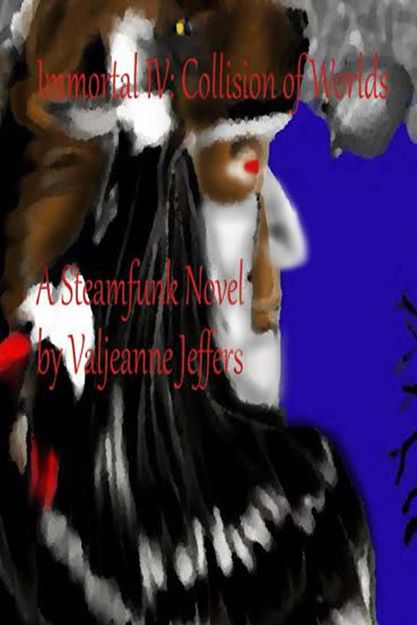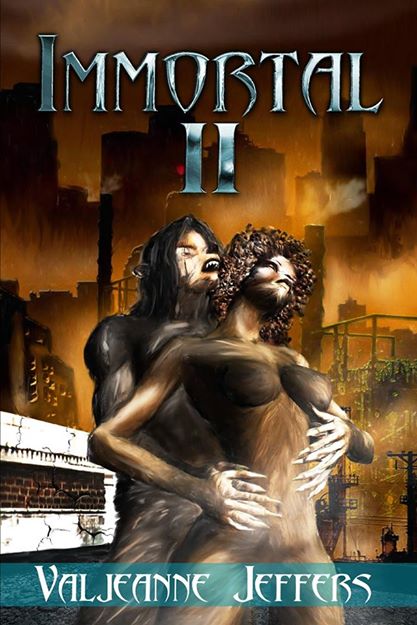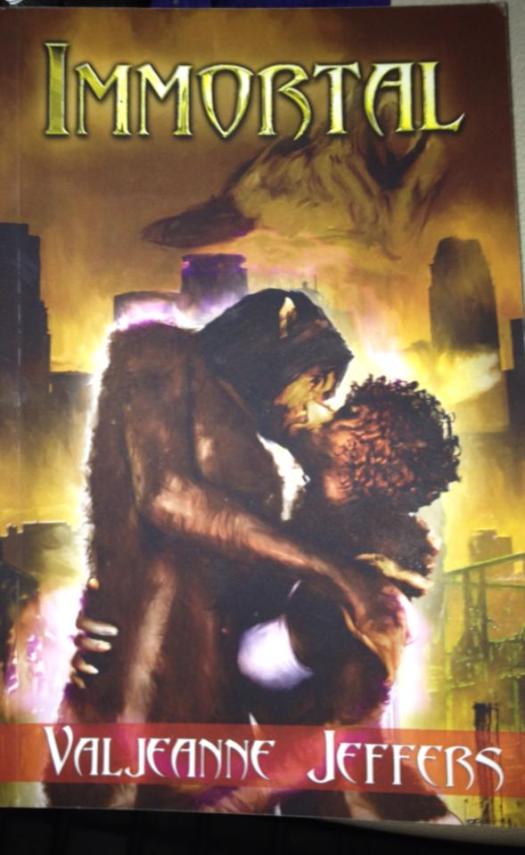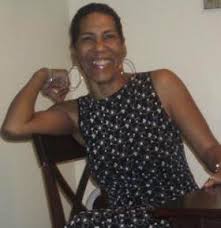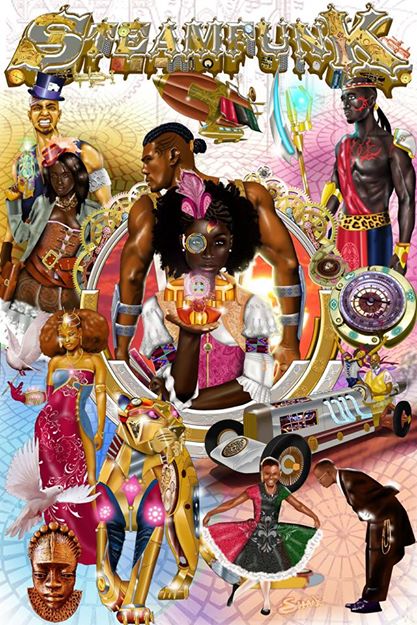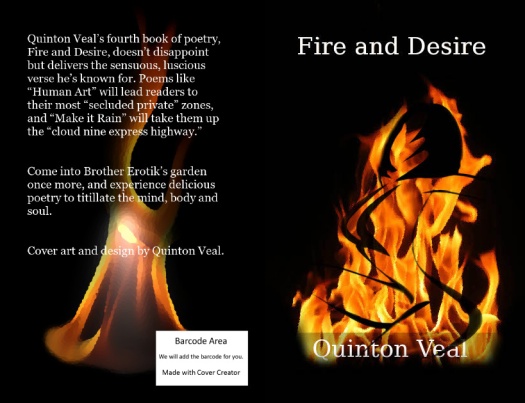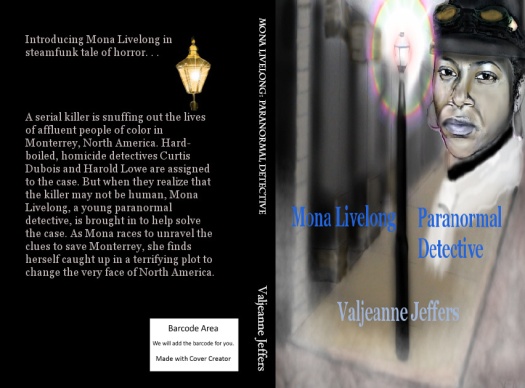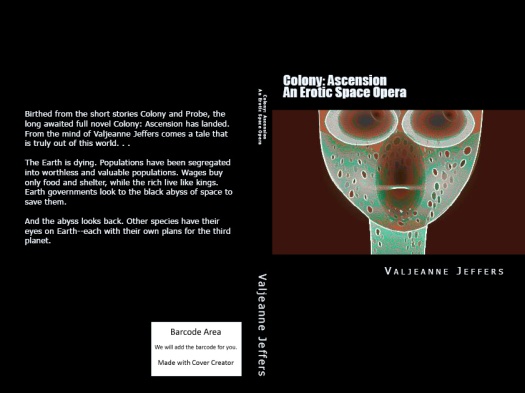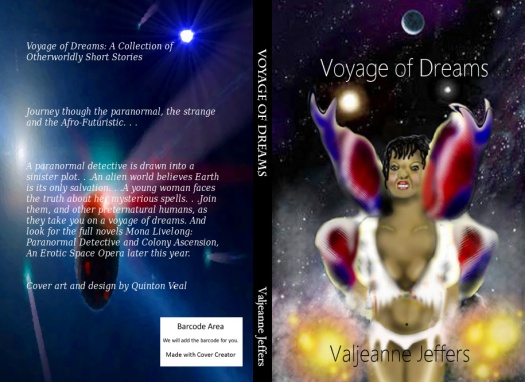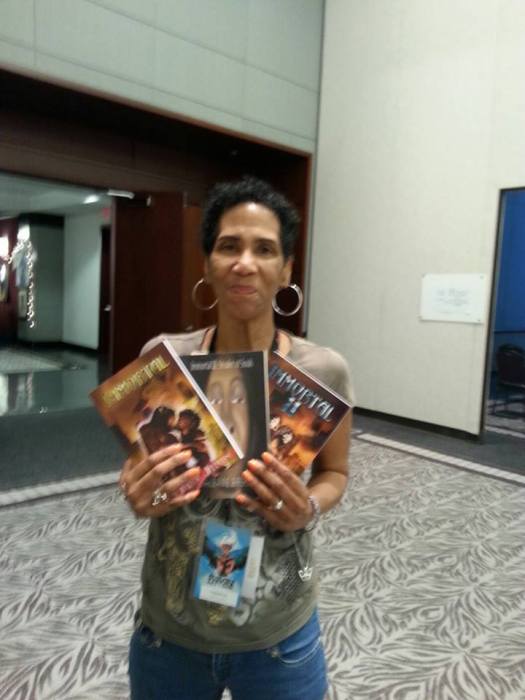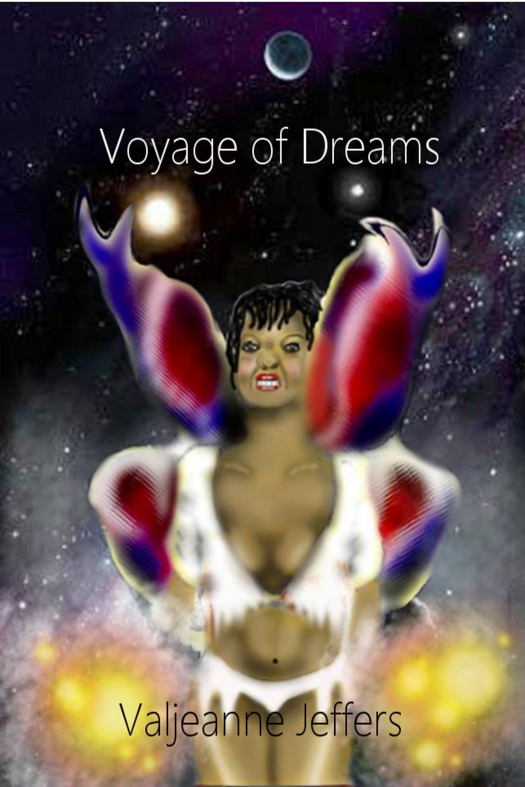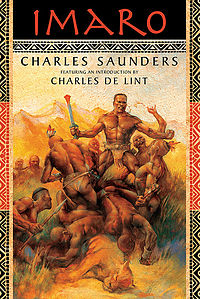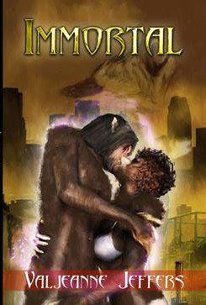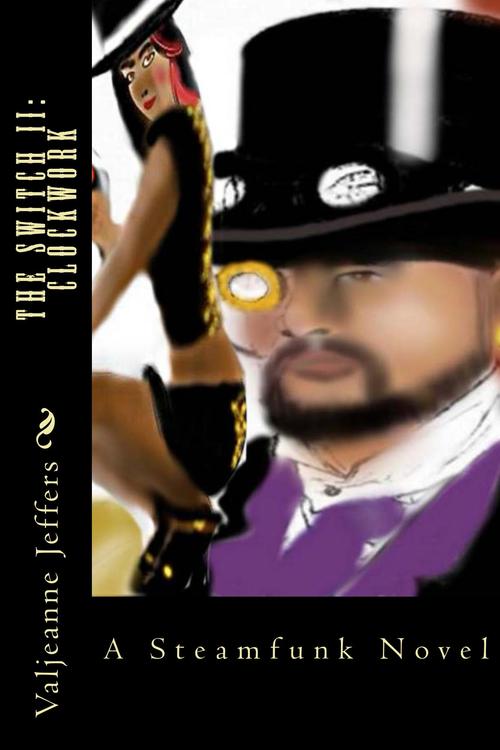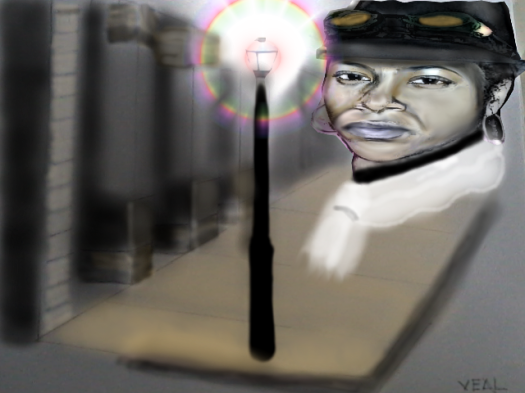AND OTHER FANTASTIC BOOKS I’VE EDITED.
Except for Immortal and Immortal II, all cover art and design was done by Quinton Veal.
Good evening everyone! Tonight I continue my series “Fantastic Books…” with a spotlight on (drum roll) my own eight SF/fantasy books which I’ve written and edited. So without further adieu I present me! 🙂
Colony: Ascension: An Erotic Space Opera (excerpt)
She awoke with an impending sense of wrongness. The astronaut reached for her view-screen, intending to alert Leonardo. His voice, any human voice, would comfort her, soothe her panic. Her view-screen was gone.
Everything was gone, her food, valise, helmet, suit. . . She wasn’t in her tent anymore. With a strangled cry she sprang to her feet, her heart pounding against her rib cage. Allandra saw that her new room was without windows. Just four walls, and a door without a knob. Behind her was the platform she’d just risen from, with translucent blankets.
The door slid opened and It stepped inside. It was tall, muscular and had two eyes, hands, arms, legs and feet. And there all of the similarity between It and a human being ended. Its head was triangular. Its eyes were bulging and perfectly round with black pupils. And Its nose was a small slit above a puckered mouth that resembled that of a fish.
The skin above Its tan form-fitting suit, and that of Its hands, was black with orange and brown stripes and had a silky almost wet appearance. Each of one of Its twelve fingers had a suction cup at its tip.
It pressed a metal button on its breast and a bass, undeniably male timbre, floated toward her: “Hello, Lieutenant Allandra.”
That’s not his voice. He’s using a translator.
“I am Chotz. You are on Planet Tyria,” the being said quietly. “I’m sorry if we’ve caused you any distress. I know you have questions. You may ask them now, if you like.”
Allandra hadn’t expected this. She’d expected meetings between equals. Shaking hands.
Pleasantries between two species. Not being kidnapped and confined in a. . . Cell. “Where’s Leonardo?” Her voice came out in a squeak.
Chotz’s puckered lips turned up in a fey smile. “He’s in a room much like yours, not far from here.”
Another cell. “Can I see him?”
“That’s not such a good idea right now. We need to get you settled in,” he replied smoothly.
“We scanned your planet before we landed,” she blurted. “We toured the surface. Why didn’t we see you?”
Sci-Fi Sunday: Interview with Voyage of Dreams Fantasy/Sci-Fi Writer Valjeanne Jeffers (This interview was originally published by Graveyard Shift Sisters)
When I asked Valjeanne Jeffers which of her books is the best introduction to her work, she didn’t hesitate before she replied, Voyage of Dreams.
And after reading it, I agree.
Voyage of Dreams is a collection of shorts from Jeffers longer works, intended as teaser for readers to have a taste of the genres the author writes in. There is horror, there is steampunk, there is erotica, there is sci-fi…
Now I must disclose that “Voyage of Dreams” does not have complete stories. Don’t pick it up unless you’re ready to understand that these are excerpts—written book trailers, if you will. They will lure you in and give you the need to know what happens next. You will come to hate the words, “To be Continued” (if you don’t already) and want to purchase the full-length novels. If you prefer to have an entire story right up front, I suggest reading the excerpts from her work on her Amazon author page and choosing a tale.
Jeffers has an enviable way with creating multi-cultural characters that leap beyond stereotypes. Her descriptions and imagery wrap you into the storylines. For writers, we are always searching for the “hook” that snags the reader quickly and Jeffers has figured that out.
She also creates strong female characters and I can never have enough of those. In Awakening, she sets her sights on freeing Nandi, an young African girl from the societal and family pressures of playing the part of princess. Nandi finds her way to becoming the warrior she craves to be, but not without significant bloodshed.
My other favorites?
Colony: Ascension – Reads like sci-fi horrorotica. A young female astronaut desperate to find life outside of Earth finds answers as she wakes up a captive of an alien race.
Mona Livelong: ParanormalDetective – Bizarre murders, a serial killer that is able to continue his work after death, and a female detective from the country who is the city cops’ last resort to stopping a plot that may affect all of North America.
First off, thank you for this interview. Tell us a bit about yourself and your writing style.
I’m a mother, grandmother, artist, poet and (sometimes) a teacher. And I love speculative fiction. I love reading it and writing it. My style of writing has been described by Charles Saunders, my mentor and a writer I greatly admire, as a world in which “science and sorcery co-exist.” Another favorite author and good friend, Derrick Ferguson, has described it as “imaginatively experimental.”
Both Charles and Derrick have described my style to a tee. When I write, I draw from horror, fantasy, science fiction, and erotica. I have a mixed-media, or I guess you could say mixed-genre style of writing. So depending upon which one of my novels a reader picks up he or she might come away describing me as horror writer, steamfunk writer etc. Some of my books can be very frightening ―I’ve even scared myself a time or two. Which, I think, is pretty cool.
When did you start writing and what drew you specifically to horror?
I started writing as a young girl; although I took a long hiatus from writing fiction and didn’t return to it until I was in my forties. I’ve always been fascinated by horror stories and shows. I grew up watching Dark Shadows, The Twilight Zone, Dracula etc. And I was always particularly fascinated by the shape shifters―vampires, werewolves and such. I was never afraid of them, instead I was sympathetic. Here were otherworldly creatures who had their weirdness thrust upon them by a bite or a scratch. My sympathy was always tinged with something else: admiration. Shape shifters, from my viewpoint, had wonderful powers!
Years later, their supernatural proclivities were gifts to me as a writer. And I began to imagine what if…? What if immortal creatures with preternatural speed and strength could change at will and use their abilities to fight for their planet? To defend the world against corporate and demonic corruption? This is how my Immortal series was born.
What inspired you to write Voyage of Dreams? What is special about this collection of short stories and how does your heritage influence your storytelling?
Well, I’ve been toying with the idea of combining excerpts from my novels and short stories into a book for sometime now. I just recently finished writing my two newest novels, Mona Livelong: Paranormal Detective and Colony: Ascension, An Erotic Space Opera, so I had an excuse to take the plunge and do it. Excerpts from five of my novels: Mona Livelong, Colony: Ascension, An Erotic Space Opera (these two newest novels will be out sometime in July, 2014) Immortal, Immortal III: Stealer of Souls, and The Switch II: Clockwork are included. I also included four short stories: “Outcasts”, “Awakening”, “Mocha Faeryland”, “Grandmere’s Secret”. I really loved bringing my stories and excerpts together― and each one is so different.
For example, Immortal is an introduction to the first novel of my Immortal series. In Chapter I, “Specter”, the reader meets Karla and is instantly submersed in her world: An alternate universe in which horror and science fiction meet, with a little erotica thrown in for good measure. As I’ve said before I don’t shy away from sexuality. I don’t emphasize it either. It’s just a natural part of my storytelling, like it’s a natural part of life.
I also included an excerpt from Immortal III: Stealer of Souls as Stealer of Souls. In this excerpt, the reader is introduced to Annabelle, a seductive and dangerous vampire. But she isn’t like any of the vampires from the old lore and films. This is a radically different type of shape shifter―with heavy emphasis on the radical. In writing Immortal III, I really got in touch with my southern roots. Annabelle is a southern belle, and she is how I’ve always pictured the southern seductress: Black, beautiful, and deadly―especially to a man. But every character should have layers to their personality, so Annabelle is not one-dimensional. None of my characters are.
In Mona Livelong: Paranormal Detective, a steamfunk, horror novel (excerpt), readers are introduced to Mona Livelong, the newest character in my newest series. Mona is kind of a city-country-city character. She is gifted with preternatural powers, and she lives in a small southern town right up the road from a big city. I really went out of my way to scare readers. I had a ball doing it too!
In speaking of my heritage, I’m a southern Black woman: card carrying and proud of it. I’m also a child of the 1960s, one of most moving and turbulent eras this country has ever seen. All of this informs my writing. Although a southerner, I’ve lived all over America and met people from all walks of life. So, I’m writing out of the Black experience, but I also identify with other races. My readers will find folks of all colors within the pages of my stories. Oppression, and fighting against it, is something common to all of us. Love, joy, hate, desire, suffering―these too, are commonalities we all share and that finds its way into my writing as well.
For you, what makes a great horror tale? What do you like to read?
There is so much about life that is terrifying―more terrifying than anything an author can write. For me, since I’m an eternal optimist, I like to read books that take horrific circumstances and transform them into something characters can triumph over; books with really terrifying circumstances and victorious characters; books that show the human spirit as indomitable. “Fairy tales are more than true: not because they tell us that dragons exist, but because they tell us that dragons can be beaten,” (Neil Gaiman). I think this is very applicable to horror fiction as well. We all know that the monster in our closet is often real. What we need to know is that we can take him down.
What scares you?
I especially, like Black authors, like Tananarive Due and Nalo Hopkinson, that take something familiar and transform it into something lethal. The Good House by Tananarive Due is the scariest book I’ve read to date. But I’m also a diehard Stephen King fan. I dig Dean Kootz too.
How can African American artists (actors, writers, filmmakers) succeed in horror and dark fantasy fiction circles? How can women? Do you feel your work has been received differently as a Black female author?
As African American artists, our job is to create the best product we can―be it books, film, or art, and then get it out there to our fans and readers. What I’m trying to say is we shouldn’t just write books (for example) we should write the best books we can―pour ourselves and our energy into them. Give the readers all you got and leave them wanting more. And then we have to market our products. As artists, we can’t wait for someone to do it for us. You have to build your own fan base. The job of female artists is no different from that of a man’s. No one is going to open any doors for us. We have to do it ourselves.
As a Black woman, I don’t think my work has been received much differently. But, I think sometimes guys―although not those in my inner circle, of course―may think that just because I’m a woman, I can’t deliver the hard-hitting battle and gory horror scenes that a man can. I actually had a male reader tell me as much at a conference. Nothing could be further from the truth. My male and female characters can swing a sword, take off a head, and mouth an incantation with the best of them. Author Charles Saunders (in his review of Immortal and Immortal II: “Immortality”) said that I can “snap a plot twist on par with the best of the thriller writers.” Author Milton Davis, has said (in his review of Immortal) that my “fight scenes are exciting and tense.” Recommendations don’t get any better than this!
What’s your next project?
As I mentioned above, I’m releasing two new novels in July 2014; Mona Livelong: Paranormal Detective and Colony: Ascension, An Erotic Space Opera. Mona Livelong is a steamfunk horror novel set in 1970. However, Mona Livelong also takes place in “North America,” an alternate historical period in which steampunk/steamfunk reins supreme, this means muskets, gas lights and steam-powered cars, to name a few. Steamfunk is one of my favorite genres. And lots and lots of sorcery. There is actually a whole cast of characters that make their debut in Mona Livelong. I hope my readers will come to love them, as they’ve come to love the characters of my Immortal series.
With Colony: Ascension, I went way outside my comfort zone and tried something totally different. Colony: Ascension is hard science fiction, a space opera―and an erotic space opera at that. But, as with my other series, I created communities of characters that are dependent upon one another for their survival. Readers can preview the first chapters of Colony on Amazon and Smashwords.
How can regional and cultural horror become more mainstream and recognizable to the wider horror fan base?
Authors have to market their books. They have to find ways of getting them into libraries. (I’ve donated books to libraries in different cities.) They have to attend conferences and they have to use social networking. These methods are already working. Many indie authors in my circle, Milton Davis and Balogun Ojetade for example, are achieving national recognition. I recently attended the Octavia Butler Arts and Activism conference at Spelman College (in Atlanta, Georgia, which as organized by author Tananarive Due). More recently my name was mentioned, along with two very well known writers and Janelle Monáe, no less, as one of the artists influencedby Octavia Butler. I was heavily influenced by Octavia and consider her to be one of my literary mentors, although I never got a chance to meet her.
What’s the most difficult part of writing for you?
I never have any problems coming up with ideas. But I can be a perfectionist. What this means for me is that I have to constantly remind myself that the first draft is the first draft. It’s not going to be perfect the first time I write it. A first draft is edited and re-edited until the final product is ready. This is a battle I seem to fight with every new novel.
What do you do when you’re not writing?
I read and edit other writers’ novels. I’m actually co-owner of Q & V Affordable Editing, a small company I started with my fabulous cover artist, Quinton Veal. I have to give a shout-out to Quinton, he’s done the artwork for all of my novels and short stories (except for Immortal I and II). He’s also very talented writer in his own right, and the author of four books.
Thank you for this interview, Valjeanne. Is there anything else you’d like to mention?
I’d like to thank Eden Royce, horror writer extraordinaire, for interviewing me! I had a blast!
Preveiw or purchase books by Valjeanne Jeffers and Quinton Veal at www.vjeffersandqveal.com

